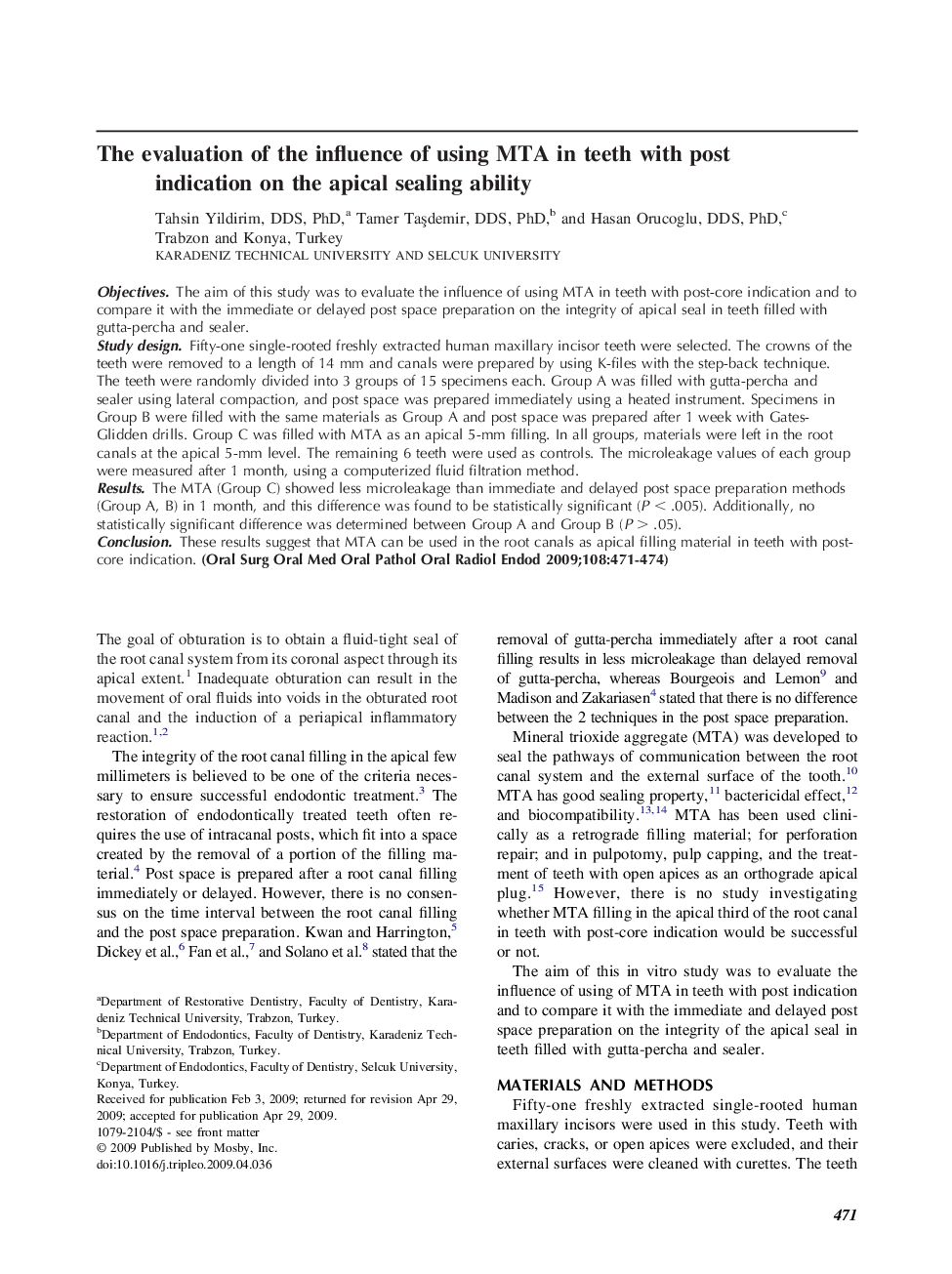| Article ID | Journal | Published Year | Pages | File Type |
|---|---|---|---|---|
| 3167999 | Oral Surgery, Oral Medicine, Oral Pathology, Oral Radiology, and Endodontology | 2009 | 4 Pages |
ObjectivesThe aim of this study was to evaluate the influence of using MTA in teeth with post-core indication and to compare it with the immediate or delayed post space preparation on the integrity of apical seal in teeth filled with gutta-percha and sealer.Study designFifty-one single-rooted freshly extracted human maxillary incisor teeth were selected. The crowns of the teeth were removed to a length of 14 mm and canals were prepared by using K-files with the step-back technique. The teeth were randomly divided into 3 groups of 15 specimens each. Group A was filled with gutta-percha and sealer using lateral compaction, and post space was prepared immediately using a heated instrument. Specimens in Group B were filled with the same materials as Group A and post space was prepared after 1 week with Gates-Glidden drills. Group C was filled with MTA as an apical 5-mm filling. In all groups, materials were left in the root canals at the apical 5-mm level. The remaining 6 teeth were used as controls. The microleakage values of each group were measured after 1 month, using a computerized fluid filtration method.ResultsThe MTA (Group C) showed less microleakage than immediate and delayed post space preparation methods (Group A, B) in 1 month, and this difference was found to be statistically significant (P < .005). Additionally, no statistically significant difference was determined between Group A and Group B (P > .05).ConclusionThese results suggest that MTA can be used in the root canals as apical filling material in teeth with post-core indication.
